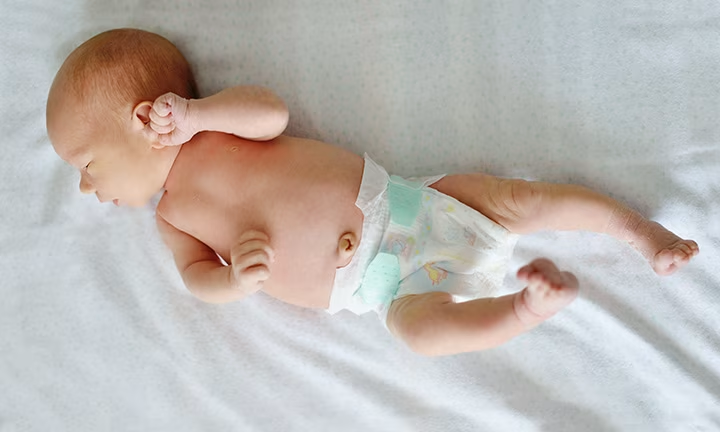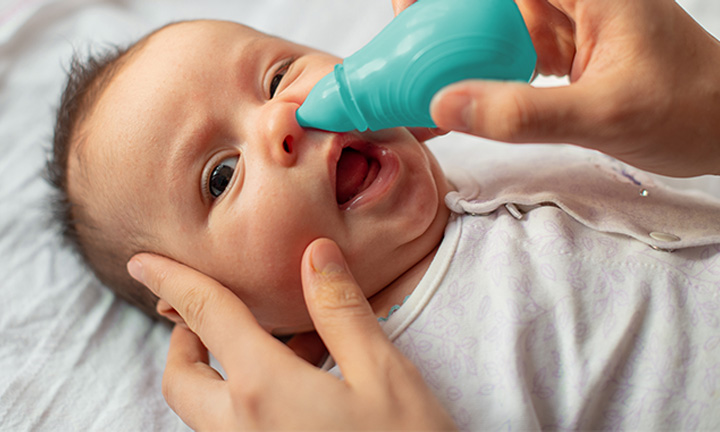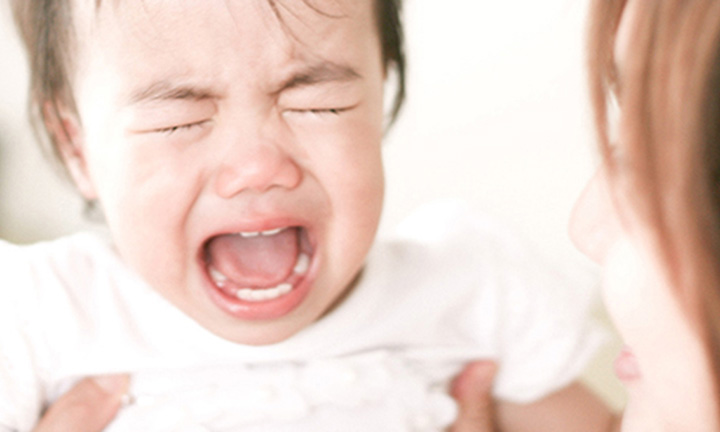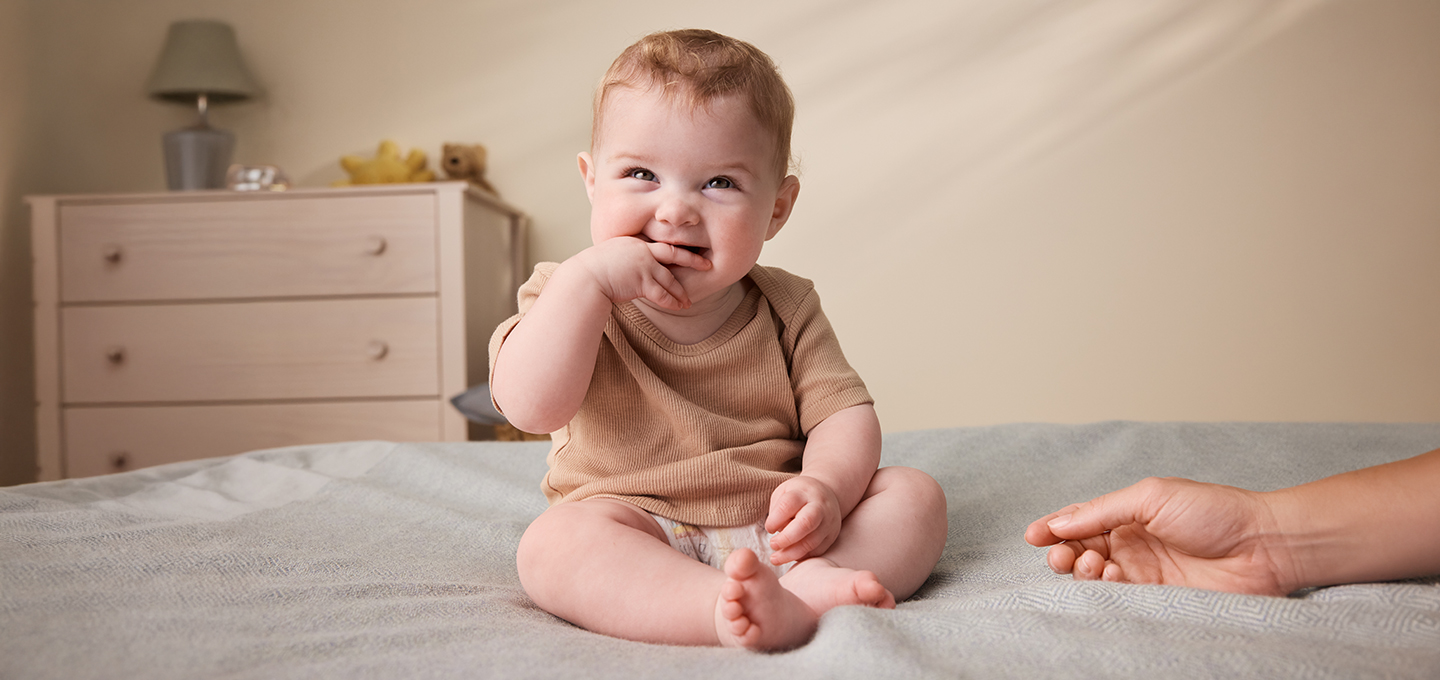
What Causes an Outie Belly Button in Babies?
A baby's belly button is a fascinating part of their body—and like babies themselves, belly buttons can be unique and different. You may have noticed that your baby has either an “innie” or an “outie” belly button. In this article, we will discuss what an outie belly button is, what causes or leads to this type of belly button, how to care for an outie belly button, and when to contact your healthcare provider.
What’s an Outie Belly Button?
Let’s start with how belly buttons are formed. The belly button—also called the navel or umbilicus—forms at the spot where the umbilical cord was once attached. The cord is cut and removed after birth, leaving behind just a small stump, which usually dries and falls off after about three weeks. As the cord area heals on your baby's tummy, the belly button is created.
An outie is an informal, nonscientific term referring to a navel that protrudes outward, rather than being concave or inward facing, called an innie. So if your newborn’s belly button is sticking out, you can call your little's one adorable little belly button an outie.
What Determines an Innie or Outie Belly Button
The primary difference between an innie vs an outie belly button lies in the way the umbilical cord heals and the appearance of the navel after the cord stump falls off. An innie belly button is concave, with the surrounding skin folding inward, while an outie belly button protrudes outward.
Remember, though outie belly buttons may be less common than innies, they’re just as cute and are nothing to be concerned about. In our section below, you can find more information on other conditions that may be mistaken for an outie belly button.

Baby Growth Chart Calculator
Keep an eye on your baby’s average growth by tracking height, weight, and head circumference with our simple tool.
This is a mandatory field.
This is a mandatory field.
This is a mandatory field.
This is a mandatory field.
*Input details of your baby’s last measurements. **Source: World Health Organization
What Causes an Outie Belly Button?
As mentioned above, a belly button is formed where the umbilical cord once was, after the stump falls off and the area heals. But why do some people have outies and others do not? It’s unclear exactly what causes an outie belly button, but it may have to do with the way the umbilical cord heals and detaches from your baby's body. Although we’ve mentioned that an outie belly button is typically a natural occurrence, in some cases, it may be a result of certain medical conditions. An outie could form because of an umbilical hernia or an umbilical granuloma, conditions that are generally harmless but that should be looked into by your little one’s healthcare provider.
Umbilical Hernia
An umbilical hernia in babies is a condition in which part of the intestine or fatty tissue bulges through a weak spot near the belly button (potentially causing the belly button to protrude). This hernia may look like a swelling or bulge and may be most evident when your little one cries or coughs. Most umbilical hernias close on their own by about 12 to 18 months. If you suspect your baby has an umbilical hernia or if they seem to be in pain, consult their healthcare provider for proper evaluation and management.
Umbilical Granuloma
An umbilical granuloma is a small, moist, red lump that can form on a baby's belly button after the umbilical cord stump falls off. It's a harmless overgrowth of scar tissue and usually resolves on its own after about a week, or with simple treatments. If it persists or causes any issues, consult your baby’s healthcare provider.
Can an Outie Belly Button Become an Innie?
Parents often have questions about outie belly buttons, including how to make an outie belly button go in naturally, how to prevent an outie belly button in newborns, and when do babies’ belly buttons go in? A key point to remember is that each belly button is unique and that there isn’t just one type. And, in most cases, an outie belly button will not change into an innie as the child grows, and there's no medical need for it to do so. However, if the outie is due to an umbilical hernia, it may resolve on its own within the first few years of your child's life. If you have any questions or concerns, contact your baby's provider. Don't try to do anything on your own to try to make the umbilical hernia close or to change the appearance of your little's one belly button, as this will not help and may cause discomfort in your baby.
How to Care for Your Baby’s Belly Button
Whether your little one has a tiny innie or outie belly button, you'll want to know how to care for it and keep it clean.
Give sponge baths at first. Use water (and avoid using alcohol) to gently clean the area as you give your newborn a sponge bath.
After the stump falls off, continue to keep the belly button area clean and dry until it heals—which may take a few days. Exposing it to air helps the healing process.
Once the stump is gone and cord area heals, you can give your baby a regular bath in a tub. After you gently clean the belly button, dry it with a soft towel to avoid infections.
Keep an eye out for bleeding. Your child’s belly button might bleed a little when the stump falls off. A few drops of blood is normal. If it continues to bleed, contact your healthcare provider.
Read our helpful for more information on how to care for your newborn’s umbilical cord.
Related Articles
When to Contact Your Healthcare Provider
As we mentioned above, an outie belly button is most often no cause for concern. However, if you observe any of the following, contact your baby’s healthcare provider:
Continuous bleeding after the umbilical stump falls off.
Signs of infection in the area, such as yellow discharge, a foul smell, or redness and swelling around the belly button.
Signs of an umbilical hernia.
Signs of an umbilical granuloma.
FAQS AT A GLANCE
There’s no exact answer for what causes an outie belly button; however, it’s possible an outie belly button is caused by the healing process after the umbilical cord stump falls off.
Yes, it is perfectly fine to have an outie belly button. It's a natural variation in appearance and typically does not cause any health issues.
An outie belly button is when the belly button protrudes outward instead of going inward. It’s thought to be a normal variation in how the umbilical cord stump healed after falling off.
It could also indicate an umbilical hernia or granuloma, both of which usually resolve on their own or with minimal treatment. If you suspect this, contact your healthcare provider for more advice.
An outie can sometimes become an innie as a child grows and their abdominal muscles develop. But keep in mind that each little belly button is unique and adorable—just like your baby. Trying to make an outie become an innie could be unsafe for your little one.
Yes, it is usually normal for a baby's belly button to stick out. When the umbilical cord falls off, your little one may be left with an innie or an outie belly button.
If you think your newborn’s belly button is sticking out for another reason, such as an umbilical hernia, contact your healthcare provider.
The Bottom Line
Outie belly buttons in babies are a normal variation in appearance and usually do not require any special care. By keeping the area clean and dry and watching for any signs of infection or discomfort, you can ensure your baby's outie belly button remains healthy and simply adorable.
If you have some spare time today, download the Pampers Rewards app to get rewards on those diapers your baby is going through.
- American Academy of Pediatrics, Caring for Your Baby and Young Child: Birth to Age 5, 7th ed. (New York: Bantam Books, 2019).
- Cleveland Clinic. “Belly Button Yeast Infection.”
- Cleveland Clinic. “Umbilical Cord Appearance and Care.”
- Healthy Children. “Bathing Your Newborn.”
- Healthy Children. “Umbilical Hernia in Children.”
- Healthy Children. “Umbilical Cord Care.”
- Kids Health. “Navel.”
- Mayo Clinic. “Umbilical Hernia.”
The information in this article is based on the expert advice found in trusted medical and government sources, such as the American Academy of Pediatrics and the American College of Obstetricians and Gynecologists. You can find a full list of sources used for this article below. The content on this page should not replace professional medical advice. Always consult medical professionals for full diagnosis and treatment.









